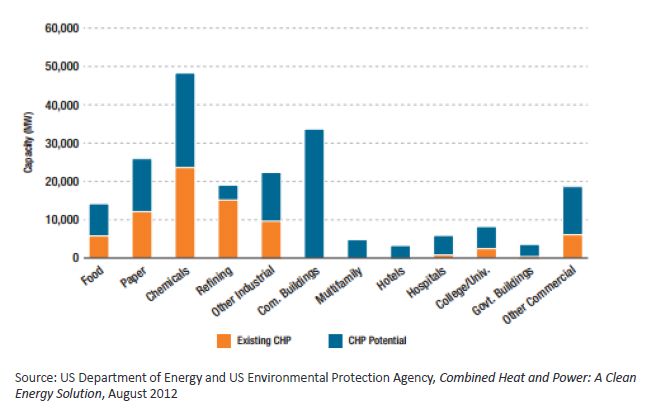Self-generation is increasingly attractive to commercial and industrial electricity customers
Low natural gas prices, increased manufacturing activity, and concerns about energy self-sufficiency have rekindled interest in combined heat and power (CHP)
- A 2012 Executive Order called for an additional for an additional 40 GW of (CHP) by 2020
- This would be a 50% increase from 2012 levels
- There were 82 GW of CHP in the U.S. as of 2014, about 8% of U.S. generating capacity
Additionally, extensive incentives for solar PV, the decreasing cost of solar panels, and increasing consumer demand for green labeling are increasing the uptake of solar PV
- Development of cost-effective battery technologies would further enhance the desirability of solar self-generation
A large share of the technical potential for CHP resides in commercial buildings

The desirability of self-generation varies
Economic benefits depend on:
- The relative cost of self-generation versus utility generation -- this can differ significantly by customer, state, and market
- Rate flexibility and negotiating power of the customer to obtain discounted rates
Reliability concerns are more important for some customers:
- Self-generation eases concerns about power outages
Regulatory (and legislative) environment is important:
- Subsidies for solar PV and sometimes CHP incentivize self-generation
- The willingness of the state commission to permit standby or interruptible rates
- Lobbying from solar and CHP equipment installers and manufacturers
- Environmental constraints
To see this powerpoint in full, please click here
The content of this article is intended to provide a general guide to the subject matter. Specialist advice should be sought about your specific circumstances.
